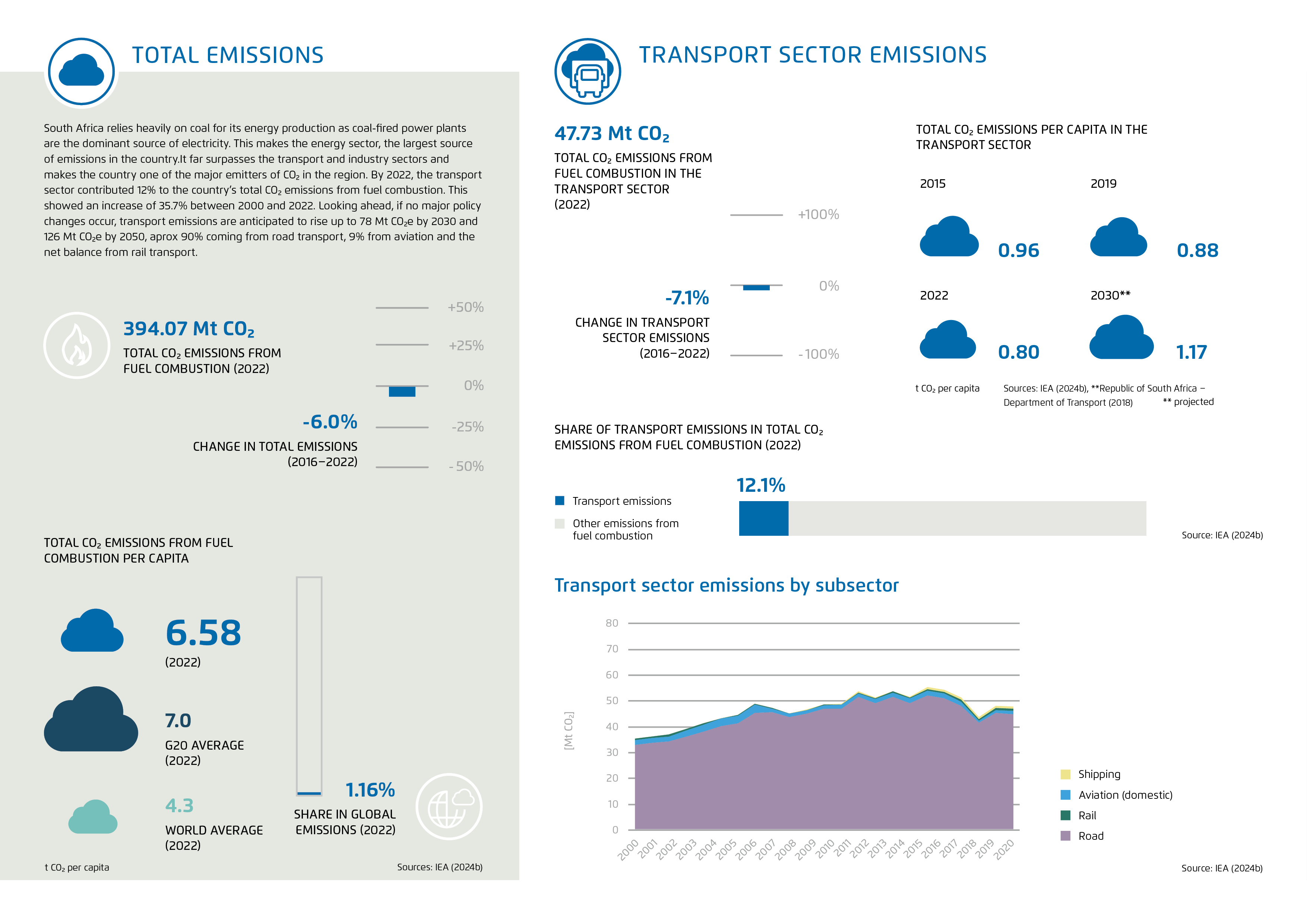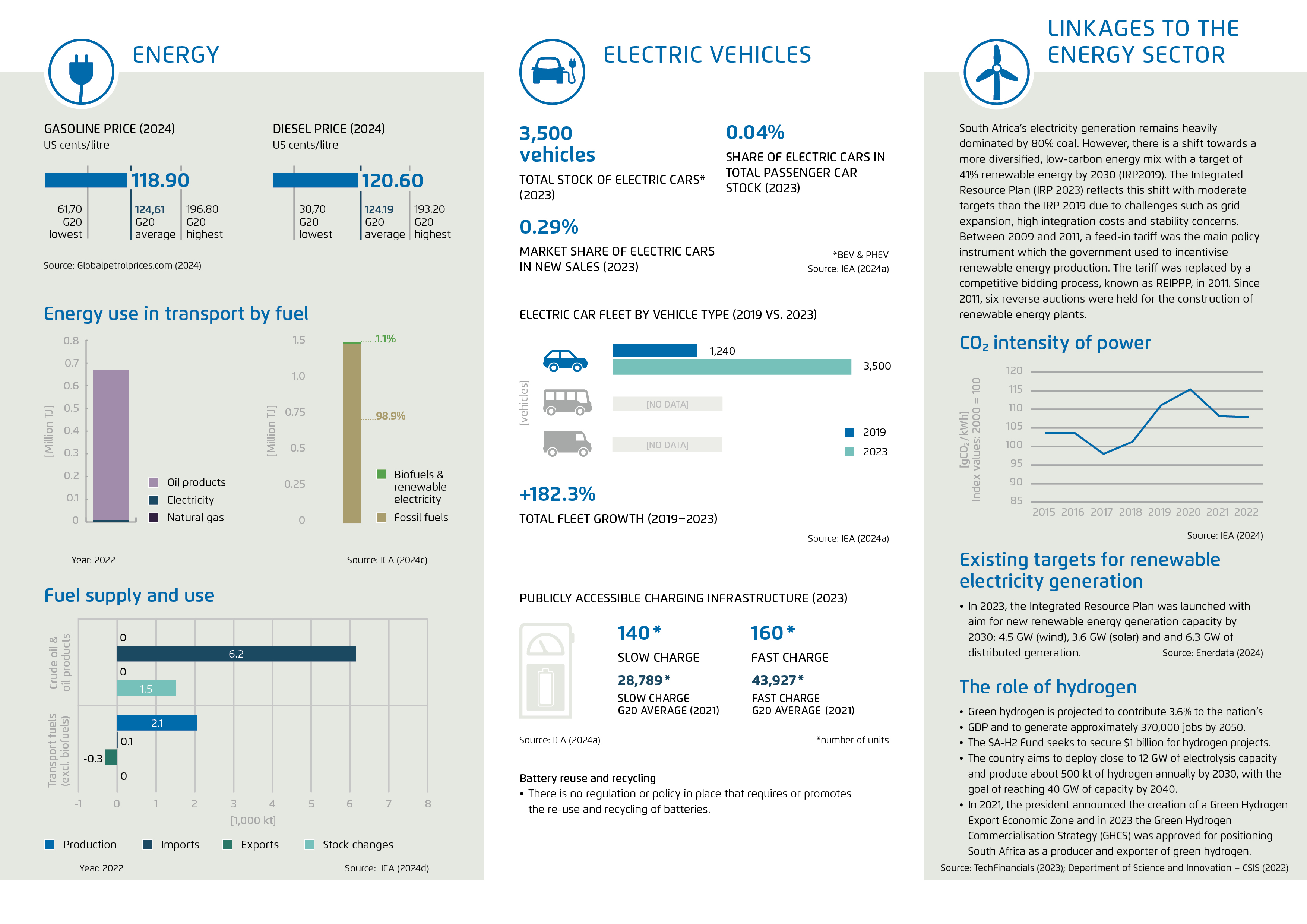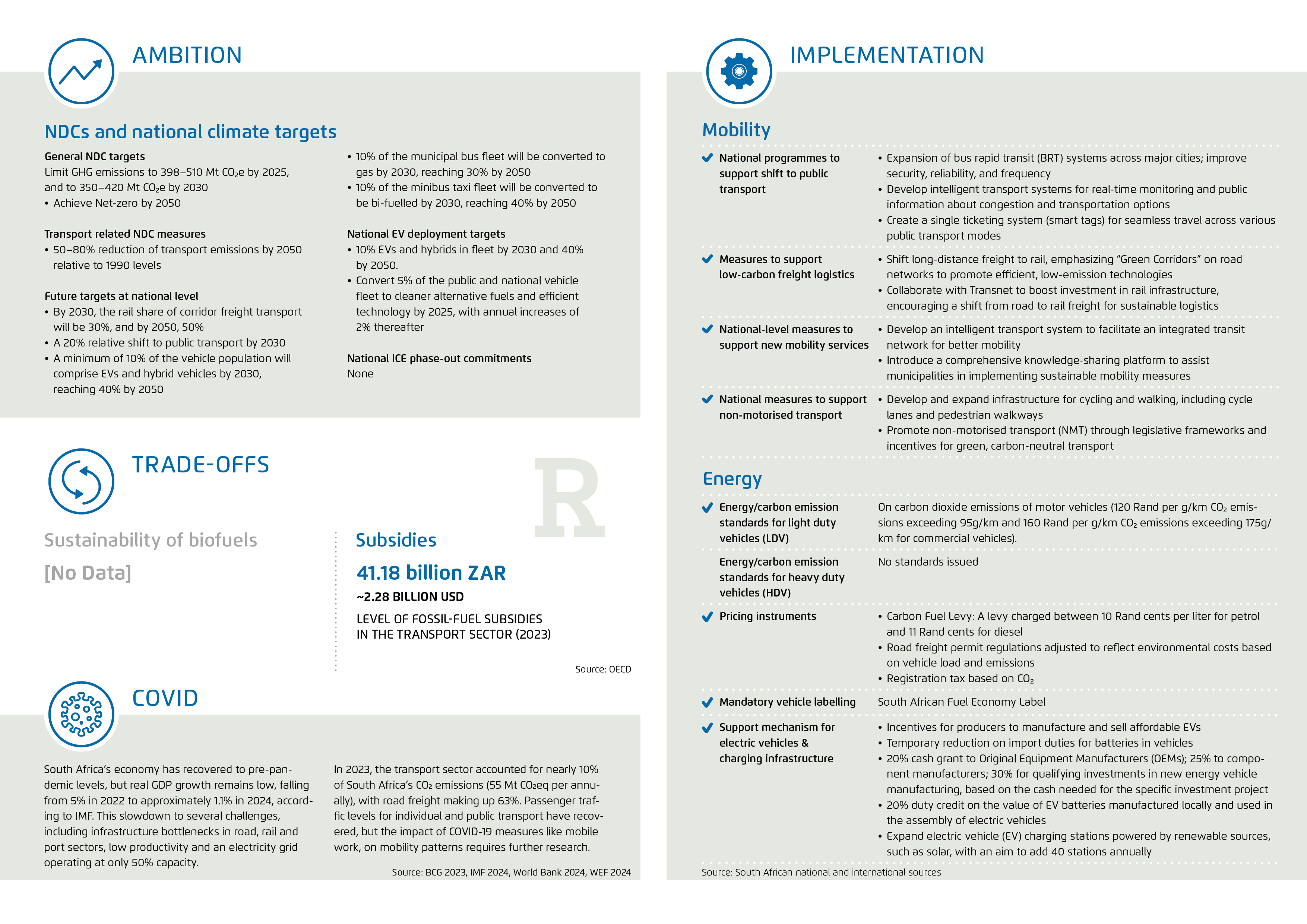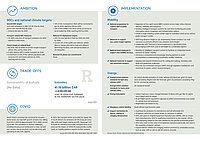This content is also available in: German
South Africa
Net-zero target: 2050 / Motorisation rate (2023): 192.8 vehicles per 1,000 inhabitants / Change in transport sector emissions (2016-2022): -7.1 % / Projected total CO2 emissions per capita in the transport sector in 2030: 1.17 t
South Africa’s transport sector is dominated by road transport, but it also possesses extensive port and rail infrastructure in addition to a well-established airline industry. The country has the highest urban population share in Africa, with over two-thirds of the population living in urban areas. Some major cities including Pretoria, Johannesburg and Cape Town have adopted Bus Rapid Transport (BRT) systems and the Metrorail system operates in four regions.
In 2017, the country launched the Green Transport Strategy which aims to reduce GHG emissions from the transport sector by 50–80% by 2050 relative to 1990 levels. It also includes mode shift targets and an interim target for vehicle efficiency by 2030. These targets were adopted before South Africa announced its ambition to achieve a net-zero economy by 2050. To further strenghten efforts, a CO₂ differentiated tax is applied to motor vehicles at registration based on their CO₂ emissions, and a general CO₂ tax was introduced in 2019.
Key figures on transport and climate
Published in Towards Decarbonising Transport South Africa 2025.








